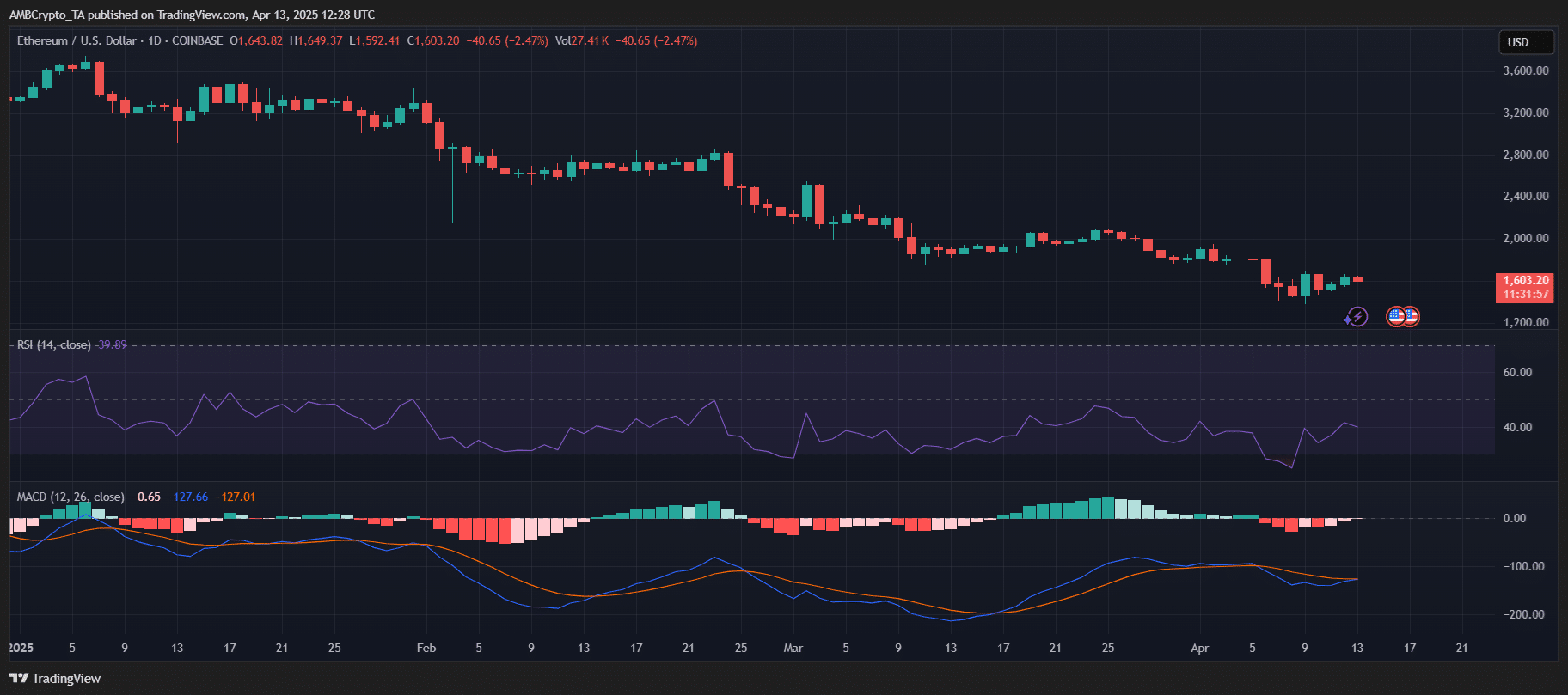Ethereum ETF outflows surge despite BlackRock’s $1.8B ETH investment
As Ethereum (ETH) faces increased pressure, ETF outflows have spiked by 39% in just one week, indicating a shaky investor sentiment towards the second-largest cryptocurrency.
However, in a display of unwavering confidence, BlackRock has significantly bolstered its position in Ethereum with a massive $1.8 billion investment, showcasing institutional belief in the long-term potential of the digital asset.
While the market grapples with these developments, Standard Chartered has thrown a curveball by predicting that XRP may surpass Ethereum in market cap by 2028, setting the stage for a heated competition for the second spot in the crypto rankings.
ETH ETF outflows reach new heights amidst price struggles
Weekly net outflows from Ethereum ETFs have hit $82.47 million, marking the largest drawdown in recent memory. This trend aligns closely with Ethereum’s price decline to $1,500 since mid-February.
The total net assets have also witnessed a steady decline, currently standing at $5.24 billion compared to a peak above $12 billion in late 2024. This divergence in short-term investor sentiment versus long-term institutional faith underscores a critical juncture for Ethereum’s market narrative.

Source: SoSoValue
BlackRock’s hefty ETH investment vs. XRP’s ambitious outlook
Despite the surge in ETF outflows, BlackRock has reaffirmed its confidence in Ethereum by acquiring a $1.8 billion ETH position. The consistent accumulation of Ethereum by BlackRock highlights a strong belief in the digital asset’s value proposition over the long term.
On the other hand, Standard Chartered’s latest report predicts a potential shift in the crypto rankings, with XRP projected to surpass Ethereum in market cap by 2028. This forecast sets the stage for a compelling competition between the two cryptocurrencies, with institutional outlooks on ETH and XRP diverging significantly.
Ethereum price analysis
At the time of writing, Ethereum’s price stands at $1,603, reflecting a 2.47% daily decline. The overall trend for Ethereum in 2025 has been bearish, with ETH shedding considerable value from its highs above $3,000 earlier in the year.
The RSI indicator suggests oversold conditions, while the MACD line indicates ongoing bearish momentum, albeit with a narrowing gap that hints at potential bullish divergence in the future.

Source: TradingView
Despite BlackRock’s substantial investment, Ethereum’s technical indicators suggest ongoing struggles to establish solid support levels. Any potential relief rally for ETH could face resistance around $1,800, while a drop below $1,550 might amplify selling pressure in the short term.
The Impact of Climate Change on Global Weather Patterns
Climate change is a pressing issue that continues to affect our planet in various ways, one of which is through its impact on global weather patterns. The Earth’s climate is changing at an unprecedented rate due to human activities such as burning fossil fuels, deforestation, and industrial processes. These activities release greenhouse gases into the atmosphere, trapping heat and causing the planet to warm up.
As a result of this warming, we are seeing shifts in weather patterns across the globe. One of the most noticeable impacts of climate change on weather patterns is the increase in extreme weather events. Hurricanes, typhoons, and cyclones are becoming more intense and frequent, leading to devastating impacts on communities and infrastructure. Heatwaves and droughts are also becoming more common, putting stress on agriculture and water resources.
In addition to extreme events, climate change is also causing shifts in seasonal weather patterns. Some regions are experiencing earlier springs and later autumns, leading to disruptions in ecosystems and agriculture. Warmer temperatures are also causing glaciers to melt and sea levels to rise, increasing the risk of flooding in coastal areas.
Furthermore, climate change is affecting precipitation patterns, leading to changes in rainfall and snowfall patterns. Some regions are experiencing more intense rainfall events, leading to flooding and landslides, while others are facing prolonged droughts, impacting water availability and agriculture.
Overall, the impact of climate change on global weather patterns is profound and far-reaching. It is essential for us to take action to reduce our carbon footprint and mitigate the effects of climate change. By transitioning to renewable energy sources, protecting forests, and implementing sustainable practices, we can help to slow down the rate of climate change and preserve our planet for future generations.

